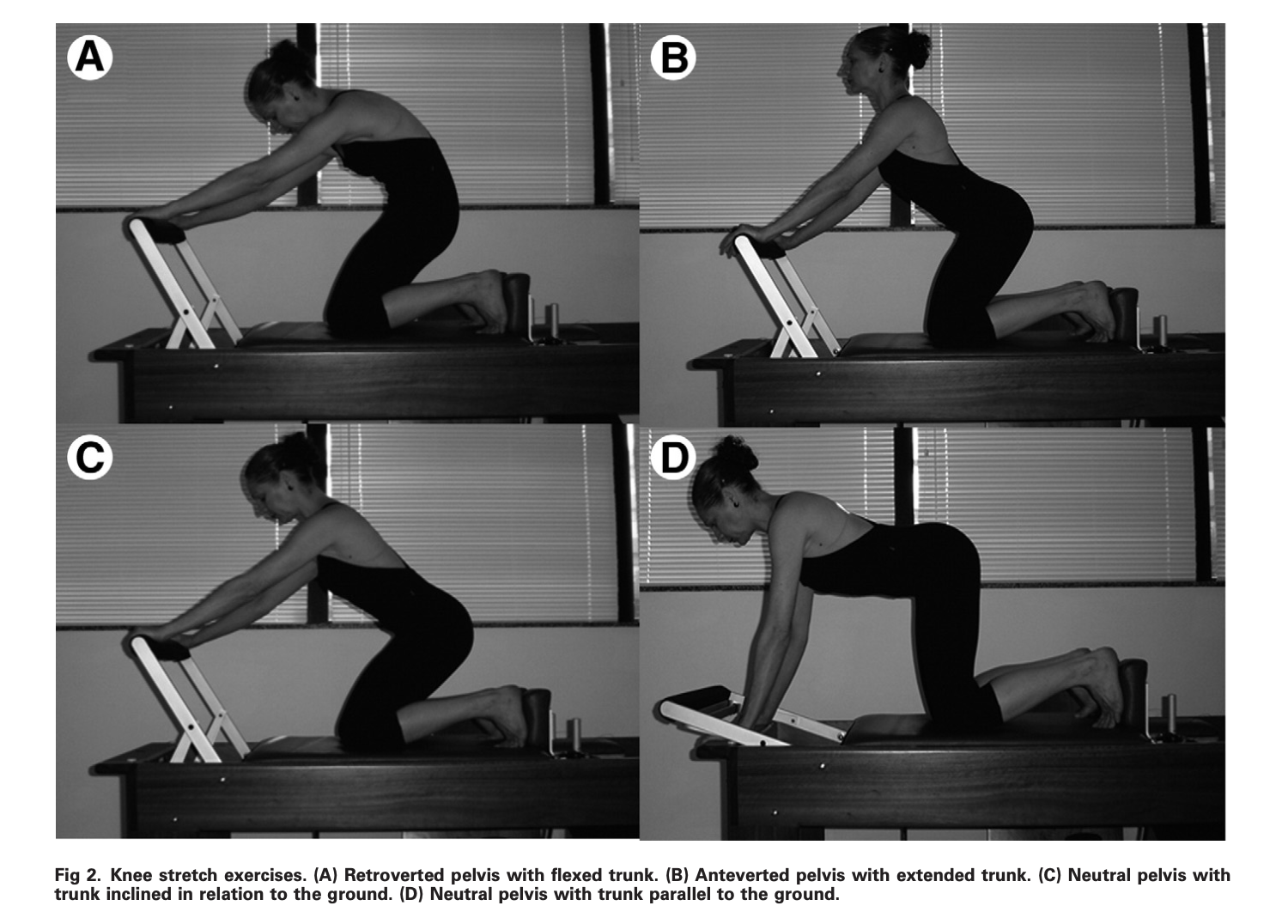Dynamic Core Stability With Knees Stretches
When we practice Pilates here at the studio, Knee Stretches appear near the end of the workout when we are nice and warm. We start with Round Back (picture A), and then Arch Back (picture B) or Flat Back (picture C). And sometimes we perform the hands/knees version with our hands on the wooden platform (picture D).
(Queiroz et al., 2010)
Knee Stretches are hip extension exercises when we push out the carriage with the load of two springs. Hip extension work glutes (butt muscles) and hamstrings (back of thighs). Knee Stretches are also a hip flexion exercise which works the quadriceps (front of thigh) when we resist the springs as the carriage moves forward to the stopper.
I think the hardest part of Knee Stretches is keeping the trunk still as the legs move forward and back, which is what creates dynamic core stability. Often, dynamic core stability exercises are clinically recommended as it plays an important role in preventing repetitive injury of intervertebral disks, facet joints, and related structures (Queiroz et al., 2010).
The purpose of the study I found was to evaluate and compare the activation patterns of the trunk flexors and extensors, as well as, hip muscles in the four variations of Knee Stretches. They used electrodes on the right side of the torso and hips to record the data (Queiroz et al., 2010).
In this 2010 study the researchers discovered that Knee Stretch Round Back is highly effective in engaging the gluteus maximus (large butt muscle) and rectus abdominis (six pack ab muscles at front of torso)(Queiroz et al., 2010).
The Knee Stretch Arch Back and Flat Back are more effective in challenging the multifidus (lower back muscles) (Queiroz et al., 2010).
One cool discovery is that all four of the Knee Stretch versions engage the external and internal obliques equally effectively (Queiroz et al., 2010). Our obliques of our side core muscles of the trunk.
All these reported findings demonstrate the effectiveness of Knee Stretches to build strength in our trunk to create much needed core stability, which is super important for preventing injuries, developing muscular balance, and creating 360 degrees of support around the spine so we can move, run, jump, throw, lift, and transfer force throughout our body (Core Stability, n.d.).
I take this study as another convincing example of how amazing Pilates apparatus is for our bodies :)
Resources
Core Stability. (n.d.). Physiopedia. Retrieved July 13, 2024, from https://www.physio-pedia.com/Core_Stability#:~:text=Having%20a%20strong%2C%20stable%20core,transfer%20force%20throughout%20our%20body.
Queiroz, B. C., Cagliari, M. F., Amorim, C. F., & Sacco, I. C. (2010). Muscle Activation During Four Pilates Core Stability Exercises in Quadruped Position. Archives of Physical Medicine and Rehabilitation, 91(1), 86–92. https://doi.org/10.1016/j.apmr.2009.09.016

